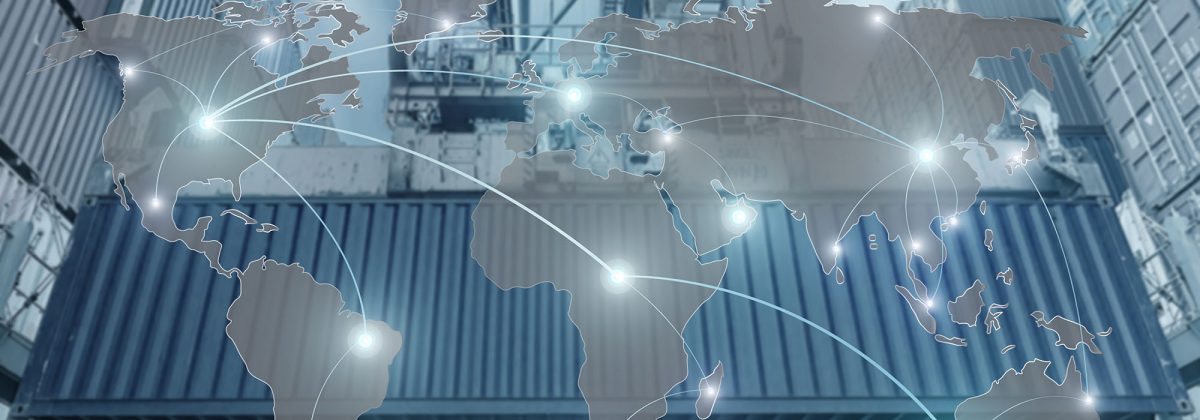The World Trade Organisation (WTO) expects global trade growth to slow down further in 2019, following a disappointing 2018. In fact, in September 2018, the WTO had forecasted a drop in the merchandise growth rate to 3.7% in 2019, from the 3.9% in 2018.
In its World Trade Outlook Indicator report, released on February 19, 2019, the international trade body said, “These estimates could be revised downward if trade conditions continue to deteriorate. The simultaneous decline of several trade-related indicators should put policy makers on guard for a sharper slowdown should the current trade tensions remain unresolved.”
Since such an occurrence could can have far reaching effects, let’s take a look at what is expected of global trade for 2019.
What Do the WTO Predictions Say?
The quarterly report of the WTO mentioned “steep declines” in a number of indices of export orders for agricultural raw materials, air freight, electronic components and automobile production. The organisation also stated that the current trade assessment was the poorest since March 2010.
The trade body had earlier warned that a number of trade conflicts were affecting investment decisions as well as business confidence. The WTO has cut its global commerce outlook for 2019, while warning that tensions between major trading partners are a threat to economic growth.
The IMF’s Perspective
The International Monetary Fund (IMF) believes that although the world economy is slowing down, a pickup may be on the cards, unless certain “policy missteps” intervene.
The IMF’s executive director, Christine Lagarde, stated that the world economy was facing a delicate moment, while adding that 70% of the global economy was expected to experience a slowdown in growth.
The report by the IMF predicts a decline growth to 3.3% in 2019, from the earlier forecast of 3.5% in the January edition of the World Economic Outlook report. This downward revision was made due to a sharp decline in global trade volumes in the first few months of the year, following an increase in exports and imports in 2018, before the tariffs by the US were put in place. Addition of further trade duties can prevent the world economy from stabilising, the report says.
The main task at hand is to resolve trade disagreements and prevent barriers that would further harm an already slowing global economy.
Other Indicators
Some forward-looking trade indicators have turned negative in recent months. In February 2019, the WTOI index fell to a value of 96.3, which is below the baseline of 100. This signalled slowing of world trade growth in Q1 2019. According to statistics provided by the International Air Transport Association (IATA), air freight shipments also faced a constant decrease of 3% in international freight tonne kilometres (FTK), year after year.
Global export order details given by purchasing managers’ indices show that orders fell below the threshold value of 50 to 49.1 in February.
What Affected Trade Growth in 2018?
Trade growth in 2018 was a victim of several factors, such as the introduction of new trade tariffs, weak global economic growth, financial market volatility, retaliatory measures impacting widely traded goods and tighter monetary regulations in developed countries.
Although the above average growth numbers of 4.6% in 2017 raised hopes that trade could gain some of its earlier steam, this didn’t actually happen. There was only slight growth in trade, as compared to the output in 2018. And, the relative weakness in trade is expected to last through 2019. One reason for this could be the slow growth of trade in the European Union, which accounts for a large share of the global trade, as compared to the global GDP.
Consensus estimates show that the world GDP is gradually slowing from 2.9% in 2018 to an estimated 2.6% for both 2019 and 2020.
Impact on the Global Economy
The WTO forecasts included downgraded GDP projections for Asia, North America and Europe. This is mainly due to certain macroeconomic factors, including:
- The weakening effect of the expansionary monetary policy adopted by the United States.
- Current economic shift of China’s economy away from investment and manufacturing and towards consumption and services.
- The discontinuation of monetary stimulus in the EU.
- The trade war between the US and China, which now involves huge tariffs from both parties.
The monetary authorities of several key economies have, for the moment, put a hold on increasing interest rates, in response to the economic data. But, the impact of such policies could take some time to be felt.
Some economists have tried to quantify the medium-term impact of a greater trade conflict on the world economy. For this, they assumed that the conflict would lead to a complete breakdown of international cooperation and all countries would set their own tariffs.
Such a “worst case scenario” would lead to a massive reduction of about 2% in the global GDP growth by 2022 and a reduction of about 17% in global trade, as compared to the baseline projections.
Trade and global output were also affected by the US government shutdown and the production problems in Germany’s automobile sector. These things could have temporary effects on consumers and businesses, who might postpone their purchase and production decisions, respectively.
Risks Due to Trade Policies
Prolonged uncertainty regarding trade policies can be a major source of downside risk to jobs, living standards and global investment. Greater trade restrictions will lower the living standards for consumers, especially those from lower income households, while increasing production costs for businesses.
Even if China and the US reach a mutual trade agreement in the short term, there is a risk that other restrictive measures could be put into place in the latter part of 2019. These include restrictions on specific trade sectors, such as automobiles and automobile parts.
This, in turn, could hit the European markets really hard, since motor vehicle exports account for one-tenth of the EU’s exports to the US and there are many supply chain linkages that could spread this impact across sectors and countries.
Some other risks due to the slowdown of world trade are difficult to quantify. For instance, the impact of Brexit will depend mostly on the type of deal that is finalised between the EU and the UK. Also, the impact of Brexit will mostly be limited to these economies. A reluctance to invest in the UK is likely to occur in most Brexit scenarios, which could reduce productive capacity over time.
Although trade tariffs are viewed as the major barrier to the growth of world trade, just the announcement of measures could be destructive as well. News about possible tariffs in the future could exacerbate the current uncertainty in the market, leading to a decrease in investment.
Reference Links





